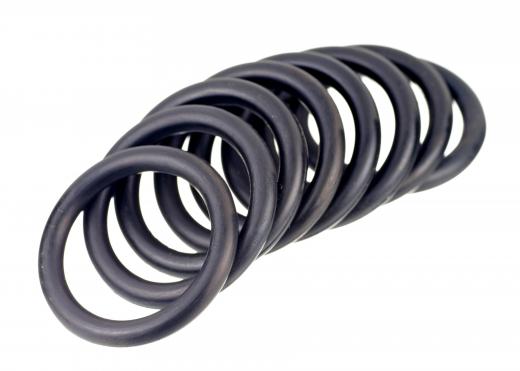Silicone is one of the most commonly used materials for the manufacture of sealing elements. This popularity is, in no small part, due to the material's excellent flexibility and working characteristics. Silicone seals may be made of various grades of silicone including rubber, foam, and the ubiquitous silicone gel sealants. Solid silicone seals may be flat, gasket types or extruded in the form of continuous cords. Gel silicone seal agents are generally available in tubs or tubes.
The efficiency of silicone seals may be attributed to the many beneficial properties of silicone in general. These include excellent resistance to extreme temperatures, good stretch, compression and shear strength, and resistance to a wide range of chemicals and environmental exposure. These characteristics make silicone seals ideal for applications featuring aggressive environmental conditions, chemical exposure, and high pressures. They are particularly well suited to internal sealing applications where sealing integrity is achieved through compression.

Several types of silicone based materials are used in the manufacture of silicone seals. These may be classified as solid or fluid seal variants. Solid silicone seals are typically made of silicone rubber and foam. These products are either molded or extruded in flat sheet or round cord forms. Gasket type seals are a good example of flat sheet type seals. These may be custom molded in their final shape or cut from stock sheets to suit the application. These seals are typically compressed between two mating parts to prevent gas or fluid leaks.

Cord seals are also produced in finished product form or stock lengths. They may be solid or hollow and are available in a wide range of cross sectional profiles. Good examples of this type of seal are O-rings and door seals. These products may also be manufactured from silicone rubber or foam. Cord silicone seals are also primarily used in compressive, internal sealing applications.

Fluid silicone sealing agents are usually available as viscous gel solutions in tubs or tubes. These are among the most widely used general purpose sealing agents for industrial and domestic applications. These include the sealing of sanitary wear, electrical equipment, pipes, and a wide range of caulking applications. Gel type silicone seals may be used as a compressive seal between mating parts or as a surface sealer. There are many grades of fluid available for a wide range of specific applications, but most are heat, chemical, and mildew resistant.
